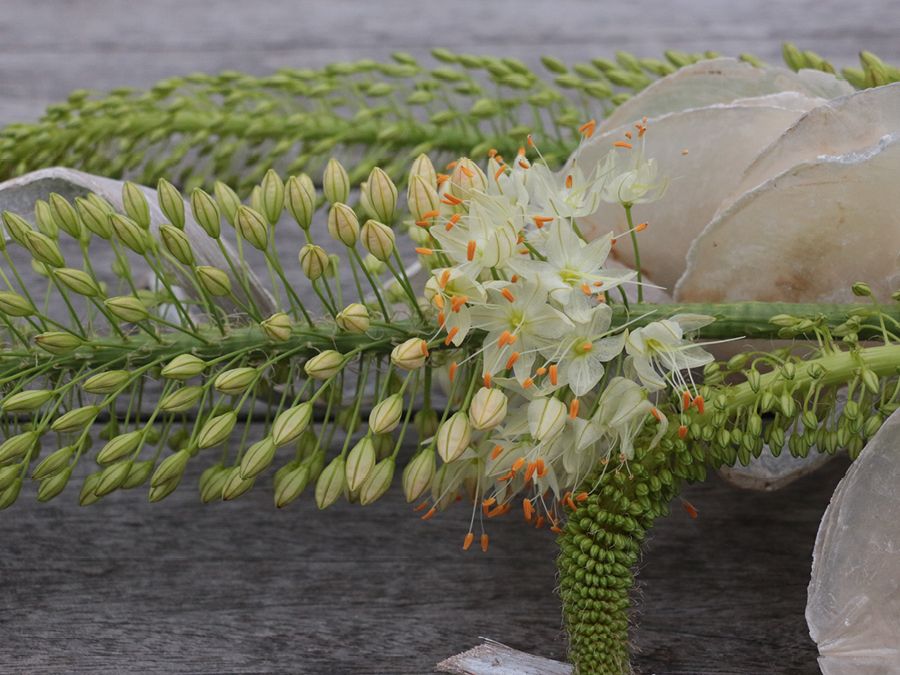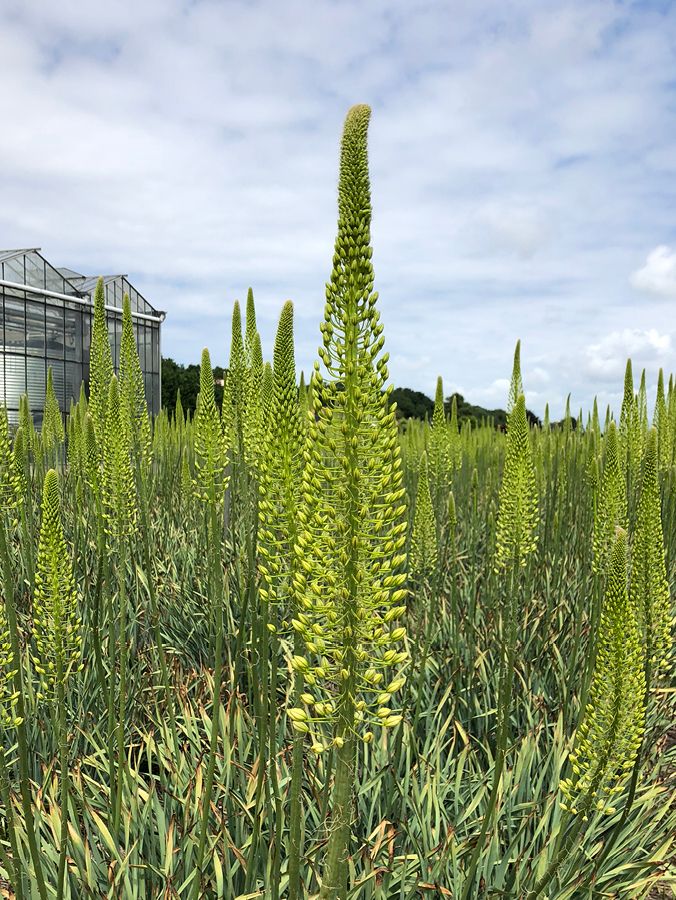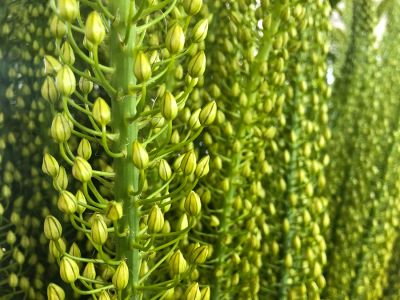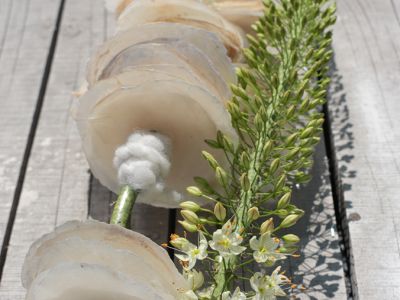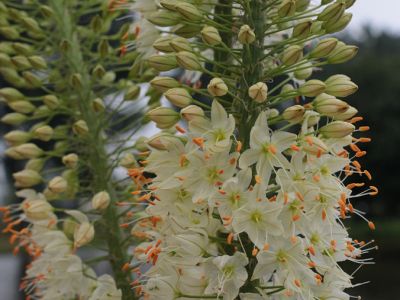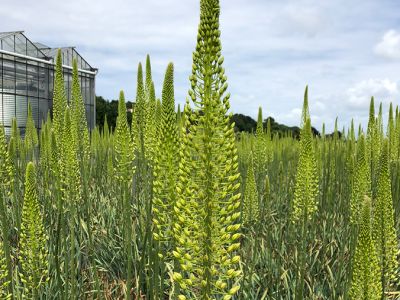Eremurus White Beauty Favorite
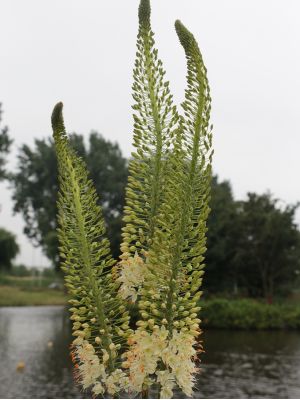
Calendar
Eremurus 'White Beauty Favorite' is available from the second week of June till mid August
In the spotlights
This week Florapodium puts the Eremurus in spotlight. Originally a desert plant, Eremurus is a beautiful and elegant flower also known as ‘Desert candle or foxtail lily’. It is very suitable for a lush flower bouquet in a large stately flower arrangement.
Eremurus is not easy to cultivate as there are many problems to deal with but Jerry and his cousin Marcel from Gebroeders de Groot have found their own way to combat these problems: perseverance!
Different varieties
Jerry and Marcel grow three types of Eremurus in orange, yellow and white colours. The species are not all available at the same time as they grow in different phases. The orange specie is the first to bloom and therefore the first offered in the season.
The Eremurus is a bulbous plant that in contrast to most bulbous plants its bulb remains in the ground all year round. Thick roots in the form of octopus’s legs are developed in the bulb spreading out in the soil. During a flowering period a new sphere that grows on top of the old bulb is created. You can see this very well in the video!
The Eremurus flower has a particularly exclusive appearance that stands out immediately in every garden. It has a strong stem with a high decorative value. In addition, the stems can be up to two meters long. This makes these flowers very suitable for large flower arrangements. All flowers open from bottom to top, making it a real colorful plume. Since the arrival of the 'picking bouquets' trend there is a higher demand for these flowers, as they also look beautiful in a solitary bouquet.
Jerry took us to the Eremurus garden and enthusiastically told us about their 'White Pride' the Eremurus 'White Beauty Favorite'. These bulbs have been bought by Jerry's father and uncle for many years and up until today this white Eremurus belongs exclusively to the assortment of the cousins.
The orange and soft pink varieties of Eremurus are already familiar in the trade, however the totally white one is less known and that is why FloraPodium puts this special variety on the map. Besides the color, the story of perseverance and the passion of the men who are behind its cultivation is what make this flower so special. Every year new challenges await the cousins as there are many risks involve in its production. Last year they lost a lot of bulbs but we asked them, "If this crop causes so many problems, what makes it so special?" Jerry gave us a beaming and short but powerful answer: "The challenge".
The cultivation
The cultivation of Eremurus does not go without a struggle as its flowering period is short, lasting only about two weeks. The supply of this product therefore depends very much on the weather.
In October, in a process called crop rotation the bulbs are excavated and then replanted on another plot. They bulbs are moved every year and only after four years they can be returned to the same plot. This is process is necessary to fight against the nematodes, a microscopic creatures found in this crop. These unpleasant visitors thrive best in sandy soil, where they can easily develop. Nematodes become active when it gets warmer and the bottom temperature reaches 10 degrees. Jerry has no idea of why do nematodes like so much the Eremurus. To learn more about them research on these tiny creatures is ongoing as there are over thousands of different types of nematodes. Most species are extremely useful because they also ensure a healthy soil life. All nematodes have different functions, from eating up rest of plants to eating other organisms. You can find them by the millions in just a square meter! However,
some varieties of nematodes such as Trichodoris are harmful to the Eremurus as it affects the crop in such a way that the plant can no longer be used.
During our visit we saw two of the three gardens that the cousins own. In addition to growing on their own gardens they also work together with other gardeners to exchange soil. So instead of competitors they have now cooperation partners.
The Eremurus is grown outside, which of course also involves risk of the weather conditions. Every year the cultivation is different and as a grower you also need to get good houses to grow this crop well. Jerry takes us through the history of recent years during our visit. An attempt has been made to grow indoors in a greenhouse or with a roller cabinet. However, both did not give the desired results. Now the men just grow outside in the different gardens. Last year a garden was completely filled with water due to the heavy rainfall. Because of this, they lost a lot of their bulbs.
Because of all these risks and problems they face every year, the question is what will be the outcome of their production be. Nevertheless, every year they manage to produce a beautiful product with long strong Eremurus in three different colours!
FloraPodium, 27 June 2018






